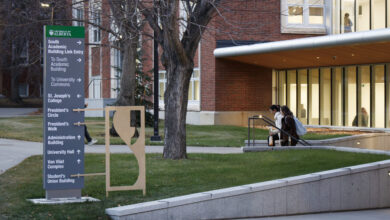Nechako documentary follows first of its kind lawsuit
Lyana Patrick’s new documentary highlights the efforts and challenges of the Stellat’en and Saik’uz First Nations to regain stewardship of the Nechako river.
 Supplied
SuppliedReleased on November 17, and premiered in Edmonton on November 15, Nechako: It WIll Be A Big River Again is a new documentary by Lyana Patrick. She is a director, former journalist, professor, activist, and member of Stellat’en First Nation.
“The film follows the efforts of both my nation and Saik’uz First Nation to protect and restore the Nechako river. The river was dammed in the 1950s by [Rio Tinto] Alcan, an aluminum company in Canada, to power an aluminum smelter,” Patrick explained.
“70 per cent of the flow was diverted,” Patrick said. “And so when that much flow is taken out of a waterway, it has a huge impact on fish. On salmon and other types of fish, but sturgeon in particular. And sturgeon are not really impacted by water temperature. But they are impacted by the low water flow created by the erosion of the banks, and they aren’t able to spawn.”
Lawsuit against Rio Tinto Alcan is first of its kind
The efforts to protect were in the form of a nuisance case specifically against the company. Which, Patrick said, is the first of its kind. “This was not a rights and title case. We wanted to go after industry, and go after a company for the harms and damages it did. And as it says in the film, this is the first time a First Nation has gone directly after industry,” she explained.
“It’s a really interesting subversion of the law for our purposes, because nuisance law originated in the United States (U.S.),” Patrick added. “It was originally used by landowners in the U.S. to prevent the federal government from having preeminent domain over their lands. For big infrastructure projects, the government would take swaths of private land and landowners would use this nuisance law to prevent that from happening, or get compensation. And Rio Tinto Alcan is a major nuisance in terms of our ability to access a main food source. And salmon is also kind of central to our cultures.”
Documentary is a full circle moment for Patrick
This documentary has been a long time coming for Patrick, and it isn’t the first time she’s covered this story either. In 1994, Patrick wrote on Rio Tinto Alcan’s water diversion to benefit an aluminum smelter for Native Voice. “When I was covering it in the ‘90s, it was pretty new to me. I didn’t know a lot of the history, but I know that if this project happened, we would completely lose our river. That project, the Kemano completion project, would have diverted another 20 per cent, so 90 per cent would have been gone.”
And 30 years later making this documentary where those within are able to speak in their own words, Patrick said, “was incredible. To be able to come back to this place five years ago when we started making this film, I felt really honoured and trusted to tell this story. And I learned so much and I got to spend more time in the territory, and ultimately, I ended up feeling way more connected than I probably ever have in my life.”
Patrick said that growing up she “saw a lot of these places as just being devastated by resource extraction and industry.” But, the more time she spent there, the more she saw “the beauty of the place and how people were working so hard to maintain what [they] have, and to keep it for future generations.”
“It’s for their children, their grandchildren, and honestly, for everybody. We’re all impacted,” Patrick says
While telling the stories of these communities, Patrick also looked to recognize the difficulty of their work, spotlighting the resilience needed. “I really wanted to show how challenging this work is. When you’re working for your community, there’s so many expectations. You have to go to these negotiations and court cases, but then you also have your obligations to community and to the land and water.”
Patrick wants those who watch the documentary to leave it feeling similarly to how she felt coming away from production. After taking the trips to talk to members of the community and be on the land, she said her eyes were opened, leaving her with an awareness and increased sense of responsibility for the land.
“As they say a few times in the film, it’s not just for themselves they’re doing this for. It’s for their children, their grandchildren, and honestly, for everybody,” she said. “We’re all impacted. I hope that people feel a sense of responsibility and are inspired by the very hard work that the people are doing … [and] inspired to protect their own places that they live.”




